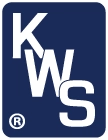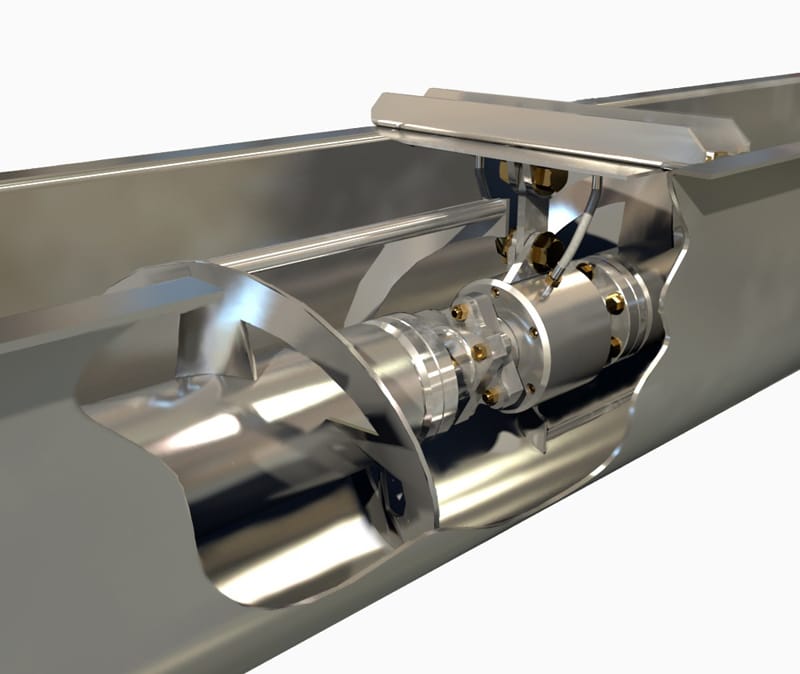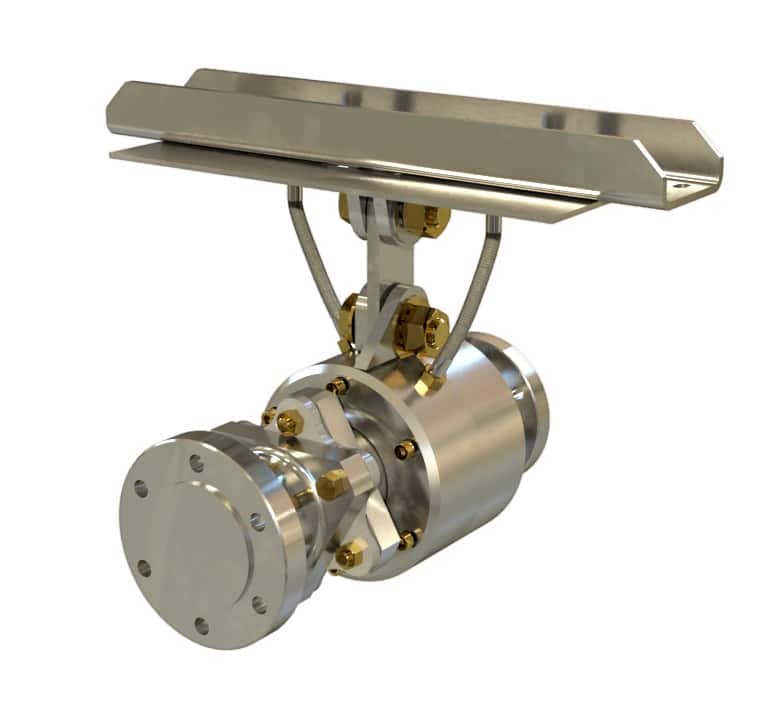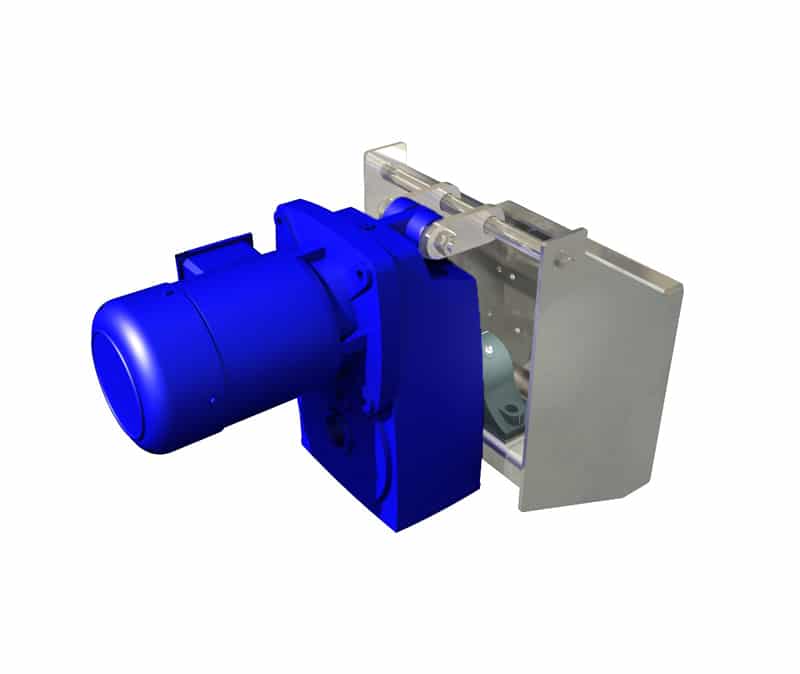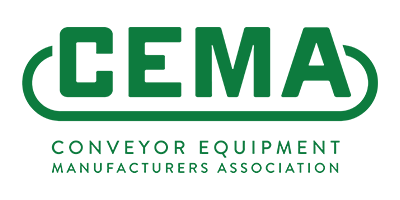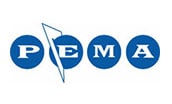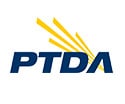Environmental Shafted Screw Conveyors
The design of shafted screw conveyors is based on the principle commonly attributed to Archimedes some 2,000 years ago. Variations of the original concept have been used since and are very commonly used throughout many industries as a cost-effective, reliable means of moving bulk materials.
Shafted screw conveyors differ from shaftless screw conveyors in design because shafted screw conveyors utilize a center pipe to support the screw flights or spiral. Shaftless screw conveyors have no center pipe. Transferring torque from the drive to the screw or spiral and the method used to support the screw or spiral differ greatly when comparing shafted and shaftless screw conveyors.
Shaftless screw conveyors do not require intermediate hanger bearings to support the spiral and rely on a trough liner as the spiral bearing surface. Since the rotating element (spiral) rests on the trough liner with zero clearance between the liner and spiral, shaftless screw conveyors are more efficient than shafted screw conveyors. Conveying efficiency is comparable when the screw conveyor is located in the horizontal position, but the greater the incline of the conveyor, the greater the efficiency benefit of the shaftless design.
Shaftless screw conveyors are replacing shafted screw conveyors in water and wastewater treatment plants because they reduce product build-up around the center pipe, contamination of end bearings & seals and problems with intermediate hanger bearings. Wastewater residuals that are stringy and fibrous such as headworks screenings cause problems with shafted conveyors because these stringy materials wrap around the center pipe and intermediate bearings causing damage and reducing conveying capacity.
So why use shafted screw conveyors? There are many applications in water and wastewater plants where the use of shafted screw conveyors makes sense. Grit is very abrasive and can cause problems with shaftless screw conveyors. Excessive trough liner wear at the boundary layer between the spiral and trough liner is common. While KWS has mitigated the problem of liner wear (see Features and Benefits: Shaftless Screw Conveyor Liners) some grit and biosolids applications should be designed with shafted screw conveyors.
While biosolids conveyance is generally best achieved with shaftless screw conveyors, where there are a number of circumstances where shafted screw conveyors should be considered. Shafted screw conveyors are ideal for horizontal applications where access to the screw conveyor is limited by proximity to other equipment or the building itself, reducing the ability to maintain and replace shaftless screw conveyor trough liners.
Another application for the use of shafted screw conveyors is where the conveyor length or conveying capacity is large and the drive torque is relatively high. Shaftless screw conveyors are limited in the ability to accept torque in excess of 100,000-inch-lbs.
Features
Tor-Ri-Flex Intermediate Bearing – Most shafted conveyor manufacturers use CEMA hanger bearing designs to support screw sections. The CEMA bearings, while low cost, are not entirely appropriate for many water and wastewater applications. CEMA bearings are friction-type journal bearings that wear at a relatively high rate. KWS has developed and successfully deployed a custom-designed intermediate bearing assembly to support shafted screws. The bearing assembly includes dual anti-friction bearings, mechanical seals, pressure lubrication system and a flexible element. The flexible element is torsionally rigid and will accept misalignment up to 2-degrees.
Flanged Screw Assemblies – KWS Environmental Shafted Screw Conveyors are designed with flanged screw assemblies. The flanged design allows for complete maintenance of the Tor-Ri-Flex intermediate bearing without needing to remove the screw assemblies. The screw assemblies can also be removed without moving the intermediate bearings, drive or tail shafts. The screw flights are mounted on an oversized center pipe to reduce deflection. Typical deflection is less than 0.125-inches at mid-span.
Floating Shaft-Mounted Gear Reducer – The drive end of a KWS Environmental Shafted Screw Conveyor is supported by a pillow block roller bearing mounted on a pedestal. The shaft-mounted gear reducer is allowed to float to accept any misalignment or screw run-out while transmitting torque to the drive shaft.
Benefits
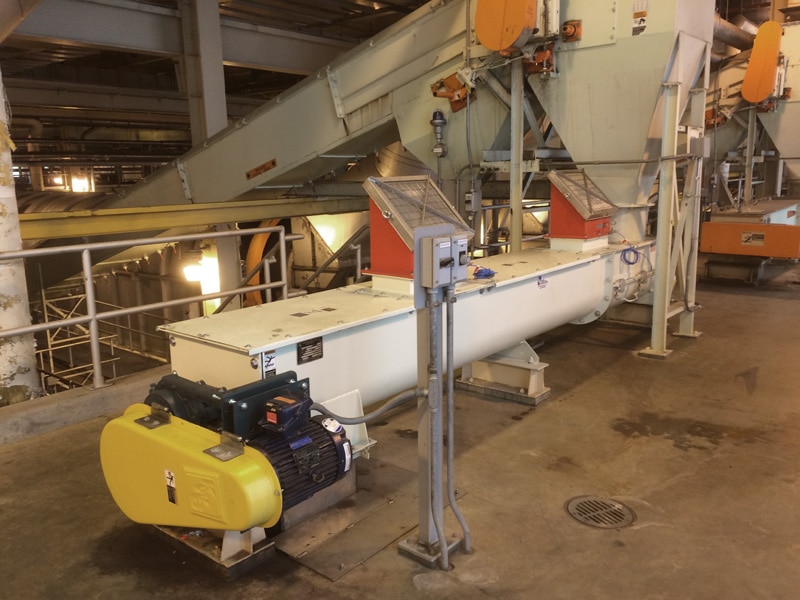
Reduced Downtime – Anti-friction roller bearings in the KWS Environmental Tor-Ri-Flex Intermediate Bearing have significantly longer life than friction-type journal bearings. The dual bearing arrangement distributes the radial load on the bearings so calculated bearing life is infinite. Pressure lubrication of the bearing housing creates a positive pressure and eliminates the possibility of any minor contamination that bypasses the bearing seals. Adequate lubrication further extends the bearing life.
Lower Maintenance Costs – The flanged screw assemblies allow for the screw and bearing assemblies to be easily removed vertically without disassembling the drive or tail ends of the screw conveyor, significantly reducing maintenance time. The number of intermediate bearings are minimized because screw sections up to approximately 20-feet in length can be used. Reducing the number of bearings further reduces maintenance time and expense.
Lower Power Consumption – KWS Environmental Shafted Screw Conveyors require less power to operate when compared with shaftless or CEMA standard screw conveyors. Shaftless screw conveyors require additional horsepower to overcome the friction of the shaftless spiral sliding on the trough liner. With frictionless roller bearings, KWS Environmental Shafted Screw Conveyors require only the horsepower needed for conveying the bulk material. Horsepower requirements can be up to 15-percent less with KWS Environmental Shafted Screw Conveyors.
